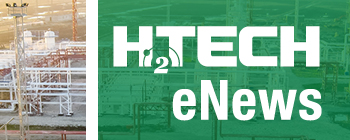News
EVIA AERO and Stralis' agreement creates basis for building one of Europe’s first zero-emission commercial aircraft fleet
EVIA AERO becomes European launch customer for Stralis Aircrafts’s H2 electric aircraft. The company has committed to purchase six Stralis Aircraft Beech 1900D-HE aircraft, with options for ten more. The agreement is an important milestone on the road to establishing one of Europe’s first zero-emission commercial aircraft fleet.
Australian clean-tech startup Stralis Aircraft is developing high-performance, low operating cost H2-electric propulsion systems and aircraft. Their first commercial product will retrofit Beech 1900D aircraft with their proprietary propulsion system, with planned service entry by 2030. The aircraft will carry 15 passengers up to 432 nautical miles (800 km), flying at a speed of 270 knots (500 km/h) at 20,000 ft. In the run up to the aircraft’s delivery, Stralis and EVIA AERO will work closely together to support the efficient roll out and operation of H2-electric aircraft.
Stralis’ technology delivers significant benefits: zero emissions (producing only water vapor), up to 50% lower operating costs, and reduced noise. Their proprietary system integrates fuel cells, liquid H2 tanks, and electric motors into existing and new aircraft designs. This innovation will help European airlines like EVIA AERO maintain viability as EU Emissions Trading System carbon taxes increase the cost for traditional fossil fuel powered airlines.
EVIA AERO is an innovative aviation company dedicated to establishing zero-emission regional flight connections across Europe. With the mission to significantly reduce CO₂ emissions in aviation and create sustainable alternatives, the company combines advanced technologies, such as electric and H2-based propulsion systems, with decentralized on-site generation of green energy.
With shorter flight durations and the need for faster, more direct routes, regional flights offer an attractive alternative to longer journeys versus train or car. The decarbonization of point-to-point air travel using smaller aircraft also serves as a role model for the entire industry. The successful deployment of this technology in regional aviation provides valuable insights that help pave the way for the use of H2-based propulsion systems in larger aircraft and on longer routes, driving the transition to a sustainable future of flight. The collaboration between EVIA AERO and Stralis aims to accelerate the implementation of sustainable solutions in aviation.
In Europe, key coastal regions, such as the Mediterranean, the North and Baltic Seas, as well as the Alps, present lucrative opportunities for airlines to connect business destinations with smaller cities. These areas benefit from high demand, both from corporate travel and leisure tourism.
“This shared vision and cooperation is an example of EVIA AERO’s commitment to H2-electric flight,” said Florian Kruse, CEO of EVIA AERO. “Our agreement with Stralis Aircraft ensures we are first on the list in Europe to receive these aircraft and are positioning Europe as a leading destination for sustainable aviation innovation. We will work intensively with our industry partners to realize the infrastructure for all types of sustainable aviation. Our mission is to convert regional airports into energy hubs.”
“We are pleased to welcome EVIA AERO as our first European customer,” said Bob Criner, co-founder and CEO of Stralis Aircraft. “We believe Europe will be one of the first regions to adopt emission free aircraft technology, and we look forward to having a fleet of our aircraft flying there. We also recognize the strong alignment between our two companies’ vision and objectives. This collaboration takes us one step closer toward making zero-emission aviation a commercial reality in Europe and beyond. Letters of Intent to purchase emission free aircraft are crucial market signals for investors, demonstrating commercial demand for these type of aircraft in the future.”
Stralis’ high temperature PEM fuel-cell technology is significantly lighter than existing alternatives, potentially enabling aircraft to fly ten times further than battery-electric solutions at a lower cost than fossil-fuel-powered planes. The company is already testing its H2-electric propulsion systems on the ground and plans to achieve the first flight of its six-seat technology demonstrator aircraft later this year.
H2-electric propulsion systems have fewer moving parts and operate at lower temperatures compared to existing aircraft engines, which is predicted to reduce engine maintenance costs by between 40%─60%. This is similar to the maintenance cost reductions seen between combustion engine and electric cars. The H2 stored onboard in a tank, powers a fuel cell that generates electricity to power an electric motor, that drives a propellor. H2-electric propulsion systems can be used for aircraft battery replacement, retrofit airframes, new clean sheet designs or even as auxiliary power units (APUs) onboard larger aircraft.

